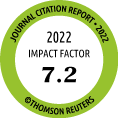Return to content in this issue
Clinical and Immunological Characterization of Perilla Seed Allergy in Children
Jeong K1, Lee S-Y2, Jeon S-A1, Gantulga P1, Nam JY1, Hong S-J2, Lee S1
1Department of Pediatrics, Ajou University School of Medicine, Suwon, Republic of Korea
2Department of Pediatrics, Childhood Asthma Atopy Center, Humidifier Disinfectant Health Center, University of Ulsan College of Medicine, Seoul, Republic of Korea
J Investig Allergol Clin Immunol 2023; Vol 33(1)
: 14-20
doi: 10.18176/jiaci.0756
Background: Perilla seeds are known to cause immediate allergic reactions. However, reports on perilla seed allergy are limited to a few case reports worldwide, and there is currently no diagnostic test for this allergy.
Objective: Our objective was to analyze the clinical and immunological characteristics of perilla seed allergy and to identify allergens for the development of diagnostic methods.
Methods: Twenty-one children with clinical perilla seed allergy were enrolled from 2 tertiary hospitals between September 2016 and June 2019. Using perilla seed extract, we developed a skin prick test (SPT) and an IgE enzyme-linked immunosorbent assay (ELISA) for diagnosis of perilla seed allergy. IgE immunoblotting was performed to identify putative allergenic components, and amino acid composition analysis was performed using liquid chromatography-tandem mass spectrometry (LC-MS/MS).
Results: The median age of children with perilla seed allergy was 3 years; the proportion of children with anaphylaxis was 28.6%. SPT was performed with perilla seed in 15 of 21 children, all of whom tested positive. On ELISA, 85.7% of children tested positive for perilla seed-specific IgE. Proteins with molecular weights of 50, 31-35, and 14-16 kDa bound to the sera of >50% of children with perilla seed allergy. LC-MS/MS analysis of these 3 protein fractions showed 8 putative proteins, including perilla oleosin (Accession No. 9963891), to be allergens.
Conclusion: This study documented the clinical characteristics and immunological profiles of 21 children with perilla seed allergy. Our results suggest that oleosin is one of the major allergens in perilla seeds.
Key words: Allergen, Seeds, Perilla, Anaphylaxis, Amino acids, ELISA, Hypersensitivity, Skin test
| Title | Type | Size | |
|---|---|---|---|
 |
doi10.18176_jiaci.0756_supplemental-materialsfigure.pdf | 173.81 Kb | |
 |
doi10.18176_jiaci.0756_supplemental-materials-tables.pdf | 284.47 Kb |



